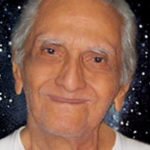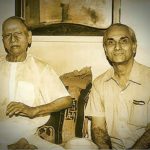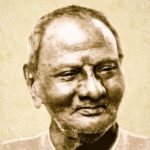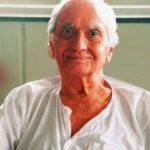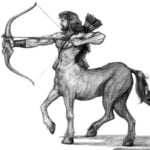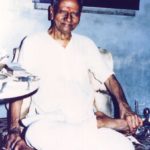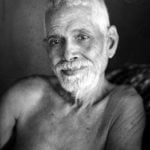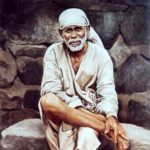March 8, 2024
Consciousness and the Now
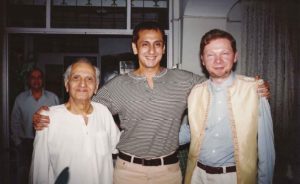
Consciousness and the Now
OH, East is East, and West is West, and never the twain shall meet,
Till Earth and Sky stand presently at God’s great Judgement Seat;
But there is neither East nor West, Border, nor Breed, nor Birth,
When two strong men stand face to face, tho’ they come from the ends of the earth!
– Rudyard Kipling
Over the years, I have invariably been asked for details of the encounter between the two spiritual Masters, Ramesh Balsekar and Eckhart Tolle. It’s human nature; our curiosity is aroused; we want to know what exactly happens when two Masters meet. Is it any different from when two ordinary people meet? Does something happen at an energetic level? What was the feeling like in the room? These are some of the questions that have come my way. It was only recently (eight years later!), that it occurred to me to pen my thoughts regarding that meeting which took place in 2002.
But first, some background to place the meeting in context.
In 2000, the publishing company Yogi Impressions was born. I actually had no intention to enter the publishing business. It was just that we had a hard time finding an appropriate publisher for my mother’s book on her visual experience of the awakening of the Kundalini. We finally decided to self-publish her book; my background in advertising gave me the confidence as I was familiar with the process of designing and printing. After we brought out her book, we had no plans to publish any more books.
My journey with Eckhart and Ramesh started, almost simultaneously, around this time. We soon found ourselves publishing Eckhart’s and Ramesh’s books. The next two titles we brought out were The Power of Now (Indian edition), and Ramesh’s book The Ultimate Understanding.
My sister Nikki had read The Power of Now around the time it had just released in the West. The book had a tremendous impact on her and she met Eckhart, almost immediately, when she was in Vancouver on a business trip. She was keen to bring Eckhart’s message to India and we ended up publishing the Indian edition of the same, through a series of synchronistic events. Eckhart had mentioned to Nikki early on that “The Power of Now will be the beginning of an adventure for Gautam.” Thanks to him, and the success of his books, we were soon able to publish books of some other spiritual masters as well. On a personal level, during my life’s spiritual journey, I have had the good fortune of meeting some wonderful beings, over the years, whom I would not have normally met had it not been for spiritual publishing. Eckhart was right – it was the start of an adventure that still continues. With Ramesh, his editor at the time informed me he was looking for a publisher to bring out his new book. I said that although I did not have much experience as such in publishing, I would be more than happy to help though they probably would be better off with an experienced publisher. Nevertheless, a meeting was arranged with Ramesh. The first question he asked me was if I had read any of his earlier books. I was in a spot! A bit embarrassed, I hesitatingly replied, “None!” I thought that was the end of that – I would politely be shown the door. To my surprise, Ramesh burst out laughing and said, “Then you’re perfect for the job!” This immediately endeared me to him and I heaved a sigh of relief.
Thus began my journey in publishing. I soon found myself also donning the hat of spiritual publisher.
In those early years, I was fortunate to develop an intimate relationship with Ramesh as well as Eckhart. I met Eckhart on numerous occasions during his retreats across the world and also spent time, a few days before and after the retreats, with him. With Ramesh, I had no idea I would end up sitting at his feet for almost ten years and that he would become a father-figure to me and the biggest influence thus far in my life. For his teaching was a validation of my life experience.
It was with this background that, when Eckhart travelled to India in 2002 and visited Mumbai, I thought it would be wonderful if I could get the two of them together. After all, I found my life situation looking like the Caduceus of Mercury, the staff with two snakes wrapped around it in the form of a double helix. For destiny had intricately woven these two extraordinary beings and their teaching around me. I was quite excited and asked Ramesh if he would like to meet Eckhart, and he readily offered an evening invitation to tea.
Now, Ramesh used to enjoy having a dig at various teachers or, rather, their teaching. Especially those who had written books! It was simply part of his programming. And at the age of about eighty-five then, he had the conviction of his life’s experience behind him, and the authority of a wizened master of Advaita taking up after his guru Nisargadatta Maharaj. Ramesh’s position was clear: All there is, is Consciousness. And so, when the pleasantries were over, the flagbearer of Consciousness wasted no time.
Once we were seated, Ramesh asked Eckhart to explain the very first line in The Power of Now: ‘You are here to enable the divine purpose of the universe to unfold. That is how important you are!’
Ramesh looked squarely at Eckhart and raised the point that the ‘you’ was nothing more than a three-dimensional object through which Consciousness functioned. So, how could a three-dimensional object be ‘important’? In his satsangs, when asked a question along the lines of ‘What is the purpose of life?’ Ramesh would answer, “Who wants to know? A three-dimensional object? An object can never know the will of the Creator-Subject.” Ramesh went on to tell Eckhart that if, on the other hand, Eckhart was addressing the Consciousness, then Consciousness needn’t be told how important It is.
What was happening was clear. In order to drive home his point, Ramesh had taken Eckhart’s words and placed them in the context of his own teaching. Initially, Eckhart tried to explain his perspective but Ramesh did not give him a chance. Consciousness’s star advocate would have none of it for he was uncompromising in his concepts of the philosophy of Advaita. What happened at this juncture was a privilege to witness, as the greatest show on earth had begun.
Eckhart was very quick in realizing that this line of conversation would not go anywhere, and there was no point in even attempting to say anything at this stage. He dropped all further attempts to explain his point of view and slipped into silence. Some visitors in the room were trying to defend Eckhart for, in their eyes, Ramesh was not being ‘fair’. But Ramesh saw that Eckhart had dropped all resistance to what he said; in fact he wondered aloud why others were getting agitated when Eckhart wasnt! In that moment, seeing Eckhart looking at him in stillness, it was as if Ramesh picked up the cue. Looking at Eckhart, he launched into what was to be one of the most lucid deliveries of his teaching. In half an hour, and without the slightest interruption, Ramesh, in a non-stop monologue, covered all his concepts of Advaita. It was clear that Ramesh launched this monologue for he saw that Eckhart was sitting across him like an empty vessel – totally present in the moment. Sitting on the sofa across both of them, I witnessed what Ramesh would say was, “Consciousness speaking through one instrument and listening through another.” I also remember the thought arising that I did not see Eckhart look to the left or the right, or get distracted – like when you listen to someone for the sake of listening when actually your mind is dancing the jig elsewhere. He was totally ‘here’, eyes fixed on Ramesh, right till the end of this one-on-one satsang. It was clear that there was much more transpiring between Ramesh and Eckhart in that exchange than what we were witnessing. It seemed like a communication at many levels. I also remember thinking that had it been someone else in Eckhart’s place, perhaps this would have never happened as the person would have relentlessly defended his position and gotten into a conceptual debate. This I had seen happen a few times at Ramesh’s satsangs.
What impacted me most was how both of them were shining examples, living embodiments, of their respective teaching. Ramesh was being who he was, his natural self. He did not care what others in the room thought of his initial stance that could have been perceived as aggression. Thereafter, once Consciousness’s divine robot saw that there was someone across him who was willing to listen, the entire teaching flowed through him like the Ganga in spate. And Eckhart comfortably slipped into the ‘Now’ in order to let events play themselves out. Or did the Now slip into him?
For me, this indeed was the greatest show on earth. It was the show of two people simply being themselves; something as simple as that. I recently came across a chapter titled ‘When Two Masters Meet’ in Mooji’s book Before I Am. Mooji is a western teacher of non-duality (Advaita). In this chapter, when asked what happens when two Masters meet, he replies: “We entertain all kinds of fanciful notions that some cosmic shift should happen, like bringing two magnets together, and this is nonsense. There are no two masters meeting. What is the difference between the space in this room and the space in the kitchen? None at all.”
This is so true. Once Ramesh had said what he needed to say, some of us (including me!) heaved a sigh of relief when the tea and snacks were brought in. While having our tea, some voices were heard whispering, “How could Ramesh be like that? What an ego that man has!” Others were saying, “Why didn’t Eckhart give it back to Ramesh?”… and so on. The joke was that all this judging was happening as far as the rest of us, besides Ramesh and Eckhart, were concerned. It was we who were carrying the ‘happening’ in our heads after it was over – the two of them looked the least bothered. Of course, this reaction some of us had was meant to be, for our framework of daily living is separation – ‘me’ and the ‘other’ – and all judgements arising consequently. After the tea, we had a merry time taking pictures together, exchanging hugs and laughter, and then I left with Eckhart and the group. I remember that while we were waiting below for the car, Eckhart laughed and just said, “Indian gurus talk a lot!”
Just before I sat down to write this article, I was reminiscing on this meeting with Ramesh’s brother, Chaitan, who was also present at that meeting then. His first comment was, “I have no idea why my brother started out in that way when he was actually looking forward to meet Eckhart. Nevertheless, it looked to me that others were more upset than Eckhart himself, at my brother’s remarks.” As Chaitan had pointed out earlier in our conversation, the difference in the two teachings was that Ramesh was clear that the ego is not the doer (God is the only doer), whereas Eckhart was telling the ego to ‘do’ something – his basic teaching being about what the ego can ‘do’ to bring itself into harmony with the peace and presence of the Now. He compared it with two distinct and separate paths of dwaita (duality) and advaita (non-duality), which eventually lead to the same destination.
Over the years, I met some seekers who visited Ramesh who would say, “Oh, but Eckhart tells you there is something for you to do.” After this statement, they would invariably compare the two teachings. But, how could you compare apples to oranges? It was missing the point. Both paths are like railway tracks – they will never come together but will eventually reach the same destination. Liberation! This is what Chaitan was referring to. It’s just that some people resonate with one teaching, and some people with another. In India, these two distinct traditions have respectfully existed side by side for ages.
Ultimately, each individual gravitates to the teaching that resonates deep within him. And that’s the reason why the philosophy of pure Advaita, as expounded by Ramesh, would not be popular – not many egos like being told they are not the doers! So, a teaching like Eckhart’s works with the masses, who understand being told there is something they can ‘do’ to improve their life situation – simply because life’s conditioning is based on doership. In fact, in India, it has always been the case that Dwaita was the teaching given to the masses, while Advaita was taught to the few whose nature it appealed to. I used to quip that the money generated by us from publishing Eckhart’s books was helping us produce Ramesh’s! Indeed, life is stranger than fiction.
On the other hand, I came across innumerable people who were fans of both Ramesh and Eckhart, and found similarities in the teachings. I could understand what they were referring to, in spite of the paths being different. Being grounded in Ramesh’s teaching, I could truly understand Eckhart’s. If, as Ramesh would say, everything is God’s Will, then there is a ‘total acceptance of what is’. ‘Total acceptance of what is’ is equivalent to ‘being in the Now’. The ‘Now’ being Vertical Time (‘what-is’), and not the involvement in horizontal time (‘what-should-be’).
Both teachings eventually bring you to the same spot: the ‘I Am’ – impersonal awareness of Being. Ramesh’s teaching addresses the ego (the ‘me’) and exposes the fraud of doership, thus pointing towards impersonal functioning in the waking state, without involvement of the ‘me’. Similiarly, Eckhart’s teaching brings you to the ‘I Am’, the Conscious Presence – the Now. I was hardly surprised to find out that Nisargadatta Maharaj’s bestselling spiritual classic I Am That was on Eckhart’s recommended reading list. In fact, one would be right to consider Eckhart as a teacher in the non-dualist tradition.
The other day, my friend Heena was wondering aloud whether to get two current day Advaita teachers together at her residence, when she found out that they would be in town at the same time. I looked at her and found myself saying, “Are you sure about that?!” She looked perplexed and asked why, and so I gave her a shorter version of the events that had transpired when Eckhart met Ramesh. At the end of it, she said that she thought there was a beautiful learning in the encounter. Although I had begun writing about it, that remark of hers is what sealed it and I decided to complete what I was writing. She asked if I would ever get two Masters together again, and I found myself laughing. I looked at her and said, “I don’t know!”
But what I do know is that Kipling’s words ring true: There is neither East nor West, Border, nor Breed, nor Birth, when two strong men stand face to face, tho’ they come from the end of the earth! The greatest strength, of course, being spiritual strength.
 Guest Blog – Arunachala Girivalam by Vikrant Rawa
Guest Blog – Arunachala Girivalam by Vikrant Rawa The End of Duality
The End of DualitySeptember 20, 2020
 Advaita and the Energy Body
Advaita and the Energy BodySeptember 14, 2020
 True Apperception
True ApperceptionApril 25, 2019

 The World’s Best Astrologer
The World’s Best AstrologerSeptember 7, 2018
 Nisargadatta and the funeral of death
Nisargadatta and the funeral of deathSeptember 3, 2018
 Ramesh Balsekar – Destiny’s child is 90
Ramesh Balsekar – Destiny’s child is 90May 3, 2018
 Nothing and the Centaur
Nothing and the CentaurApril 23, 2018

 Maharaj and the Trojan Horse of Conscious Presence
Maharaj and the Trojan Horse of Conscious PresenceAugust 11, 2015

 Consciousness and the Fenix
Consciousness and the FenixNovember 17, 2011
 A Double-edged Sword
A Double-edged SwordJuly 3, 2010
 Spending no time with Eckhart Tolle
Spending no time with Eckhart TolleApril 3, 2010
 Samadhis of the Sages
Samadhis of the SagesJuly 3, 2009
 You have the right to remain silent
You have the right to remain silentAugust 3, 2008
 Clearing Sadhana
Clearing SadhanaMarch 3, 2008
 Sai Baba of Shirdi – The hidden jewel of Advaita
Sai Baba of Shirdi – The hidden jewel of AdvaitaNovember 3, 2007

